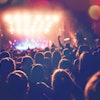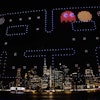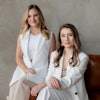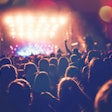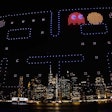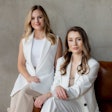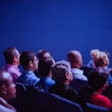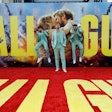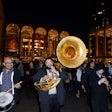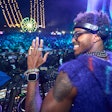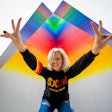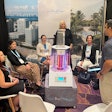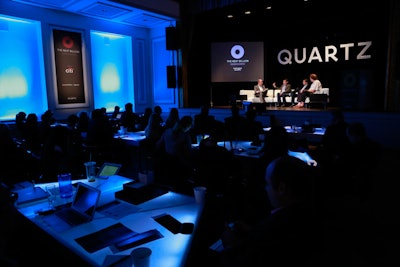
The digital business news outlet Quartz launched in 2012 with some lofty ambitions: “Like Wired in the 1990s and The Economist in the 1840s, Quartz embodies the era in which it is being created,” its “About” statement says, trumpeting its dedication to innovative, experimental digital storytelling techniques.
So it was important to Quartz, owned by Atlantic Media, that its first full-day conference presented information in unconventional ways and created an experience that felt modern to an audience of executives who know their way around a plenary session.
“We didn’t want it to feel like you were at another business conference,” says events manager Kim Last, “we wanted it to feel cool.” Called the Next Billion, the November 6 event explored the coming wave of Internet users, many going online for the first time via mobile devices in the developing world. The free, invite-only conference drew 400 attendees.
To make the event stand out, Last chose a venue not regularly used for corporate events (the Bohemian National Hall on the Upper East Side), lit its main hall dimly, and filled it with modern, glowing tables where attendees spread out their laptops and tablets to take notes or work. At the beginning of the final session—a conversation with Cognitive Surplus author Clay Shirkey and Quartz editor in chief Kevin J. Delaney—waiters entered the hall with trays of wine glasses.
“I wanted it to feel like it took you away to a better place,” Last says. “So many organizations hold events these days where I’m not sure people are thinking about the visual aspects of things—the look and feel of the venue, what lighting can do, the furniture you bring in.”
Aesthetics aside, Last focused on putting together a dynamic agenda. “A lot of the ideas for the content around the event and also the delivery came from the editors,” she says. While all of the guest speakers spoke in a Q&A format—providing a break for attendees tired of TED-style talks and letting Quartz showcase its journalists as interviewers—the day included a mix of approaches. Here’s how Quartz livened up its conference agenda. (You can read the agenda here.)
1. Research speakers
Anyone who has seen an interesting person give a boring talk knows that different people thrive in different presentation types. So Last worked to find the best format for each guest. “You have to think about the types of speakers you’ve recruited for each of the sessions,” she says. “If you have someone who’s going to thrive in a one-on-one environment, you should put them in a one-on-one environment.”
That requires some extra work beyond just booking someone to speak. “You need to do your research,” Last says. In addition to talking to the speakers themselves, that means finding online clips of them speaking, to see how comfortable and engaging they are on stage.
The interviewers also got detailed briefing notes on each guest, and Last played matchmaker when pairing them. “What we tried to do was match up speakers with editors they would jibe with really well on stage,” she says.
2. Experiment with new formats
The day of sessions mixed one-on-one interviews and small panels, with variations in interview styles. The individual interviews inserted between the panels were called “Quartz Interludes” and had a “Five Questions” format. Last says this packaging sent two messages: “We get straight to the point and give you the takeaways you need to know,” she says. Also, “there’s something about calling something an interlude that says we’re going to shift and talk about something else for a while.”
To add some variety to the panels, the interviewers tried a few different approaches. Delaney conducted the first panel of the day late-night-talk-show-style, interviewing one speaker on his own before bringing out a second guest to join the conversation, then a third. In a later session on crowdsourcing, an editor interviewed one speaker, then the first speaker questioned a second, who in turn asked questions of a third, while the editor raised questions gathered from attendees via Twitter. "The risk with doing this sort of interview is you relinquish control a little bit, but that’s a risk you have to take," Last says. "I think it worked in a really interesting way."
3. Offer some perspective
In the afternoon, news editor Gideon Lichfield took the stage for a five-minute “Cheat Sheet” session called “Five Things That Have Made Me Sit Up and Listen so Far,” recapping some highlights of the day and providing some context for attendees. “Gideon writes parts of our daily brief newsletter so he’s really good at synthesizing the info that you need to know about,” Last says.
4. Provide short bursts of information
In one-minute appearances that felt something like a live magazine sidebar, senior editor Zach Seward presented charts, graphs, and statistics related to the theme of the conference and its sessions. Quartz also tweeted the information from @QZLive.
5. Create a visual break
Immediately following lunch, Quartz invited the photographer Platon to show some of his work, including portraits of “revolutionaries” including Mark Zuckerberg, Bill Clinton, Vladimir Putin, and Barack Obama. The idea, Last says, was to program “something fun and a little bit out-of-the-box for a business conference, something to liven up the energy of the crowd after we gave them carbs.”
As the images showed on screen, Platon told stories from the shoots. “He’s very lively,” Last says. “The images themselves are lovely, but if you just looped those on stage in a PowerPoint it would never have the same effect.”

